Samsung Unveils 2019 Notebook 9 Pen 13 & 15
by Anton Shilov on December 14, 2018 1:00 PM EST- Posted in
- Laptops
- Intel
- Samsung
- NVIDIA
- Notebooks
- Notebook 9
- Core 8th Gen
- Whiskey Lake
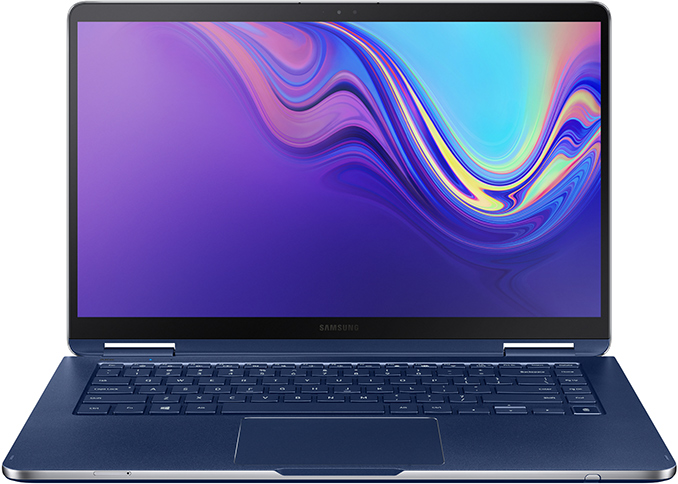
Samsung on Thursday introduced its next-generation Notebook 9 convertible laptops that will hit the market next year. The new lineup of convertibles includes models with a 13.3-inch display or a 15-inch display. These models and are aimed at professionals who need performance of Intel’s Core i7 CPUs along with convenience of a stylus in a relatively portable package. Also notable is that the new systems are the industry’s first PCs from a renowned brand to feature a UFS card reader.
Samsung’s Notebook 9 lineup of notebooks is well known and respected for its portability and moderate pricing. The company has been expanding this product family for quite a while now, introducing the Notebook 9 Pro in mid-2017, the Notebook 9 Pen in late 2017, and the Notebook 9 Spin convertibles somewhere along the line, creating some confusion. Since the “Pro” and the “Pen” have a lot in common, it looks like Samsung is going to merge these two lineups into one starting next year. Since the new Notebook 9 Pen hybrid laptops will have to address slightly different audiences, Samsung had to significantly alter design of its 13.3-inch Notebook 9 Pen convertible machine: the new one features a higher-capacity battery, but a bit thicker profile and a higher weight (15.9 mm, 1.12 kilograms).
Despite different display sizes (yet both featuring a Full-HD resolution) and overall dimensions (see the table below for exact numbers), the new Samsung Notebook 9 Pen 13 and Notebook 9 Pen 15 resemble each other a lot. Both systems come in a CNC-machined aluminum chassis with Ocean Blue finish.
The new units ship with Samsung’s new S Pen stylus that is stored inside the chassis, can sense 4,000 levels of pressure, has tilt sensitivity, and features a reduced latency when compared to the existing model. Perhaps, the most interesting feature of the tiny device is swappable tip for different types of work. Both machines are equipped with a 54 Wh battery that provides up to 15 hours of battery life on one charge in the best-case scenario.
Hardware wise, both Notebook 9 Pen systems are based on Intel’s 8th Gen Core i7 processor (think quad-core Whiskey Lake) accompanied by LPDDR3 memory, and a PCIe/NVMe SSD. The 13.3-inch model relies on Intel Graphics UHD 620 iGPU, whereas the 15-inch SKU has an NVIDIA’s GeForce MX150 discrete GPU paired with 2 GB of RAM for extra graphics oomph.
I/O capabilities are strong selling points of Samsung’s Notebook 9 Pen. The upcoming hybrid PCs from Samsung have a 802.11ac Wave 2 Wi-Fi + Bluetooth controller featuring Gigabit-class performance, two Thunderbolt 3 ports, a USB Type-C connector, stereo speakers co-developed with AKG, a microphone, a TRRS audio input/output, and a UFS + microSD card reader. The latter deserves a special attention as this is the first time when a renowned PC maker launches a laptop with a UFS card reader. Being the main driving force behind the UFS specification, Samsung yet has to support these high-performance cards on its other products and we can only wonder why the company has not done so thus far. In the meantime, the fact that Samsung’s new laptops have a UFS card reader may indicate that the company has plans to enable UFS support on other devices as well.
When it comes to security, Samsung’s Notebook 9 Pen systems are outfitted with a fingerprint reader along with an HD webcam featuring IR sensors for Windows Hello facial recognition.
| General Specifications of Samsung Notebook Notebook 9 Pen | ||||
| Notebook 9 Pen 13 (2018) |
Notebook 9 Pen 13 (2019) |
Notebook 9 Pen 15 (2019) |
||
| Launch | 2018 | 2019 | 2019 | |
| Display | Type | 13.3" RealViewTouch | 13.3" RealViewTouch (?) | 15.0" RealViewTouch (?) |
| Resolution | 1920×1080 | |||
| Brightness | Typical: 350 cd/m² Outdoor: 500 cd/m² |
? | ? | |
| CPU | 8th Gen Intel Core i7 (KBL-R) | 8th Gen Intel Core i7 (Whiskey Lake?) |
||
| Graphics | Intel UHD Graphics 630 (24 EUs) | Intel UHD Graphics 630 (24 EUs) | NVIDIA GeForce MX150 2 GB | |
| Memory | Up to 16 GB DDR4 | LPDDR3 | ||
| Storage | SSD | Up to 512 GB PCIe | PCIe/NVMe SSD | |
| Card | microSD card reader | UFS + microSD card reader | ||
| Wireless Connectivity | 2x2 802.11ac BT 4.1 |
2x2 802.11ac Wave 2 BT |
||
| Thunderbolt 3 | - | 2 × Thunderbolt 3 | ||
| USB | 1 × USB 3.0 Type-A 1 × USB 3.0 Type-C |
1 × USB 3.0 Type-C | ||
| Display Outputs | HDMI | DP 1.2 via TB3 | ||
| Webcam | 720p webcam with IR sensors | |||
| Battery | 39 Wh | 54 Wh | ||
| Audio | 2 × 1.5 W speakers 1 × microphone 1 × TRRS jack |
Stereo speakers with ThunderAmp 1 × microphone 1× TRRS jack |
||
| Dimensions | Width | 310.5 mm | 12.22" | 307.9 mm | 12.12" | 347.9 mm | 13.7" |
| Depth | 206.6 mm | 8.13" | 206.2 | 8.11" | 229.1 mm | 9" | |
| Thickness | 14.4 - 16.5 mm 0.56" - 0.65" |
14.9 - 15.9 0.58" - 0.63" |
16.9 mm 0.66" |
|
| Weight | 995 g | 2.19 lbs | 1.12 kg | 2.47 lbs | 1.56 kg | 3.44 lbs | |
Samsung plans to demonstrate the new Notebook 9 Pen machines next month at CES. Also at the show the company will disclose exact specs of the convertible notebooks as well as prices.
Related Reading
- Samsung Announces New Notebook 9 Pen and Three New Notebook 9 (2018) Laptops
- Samsung Announces Notebook 9 Pro 2-in-1, Includes S Pen Stylus
- Samsung Unveils Galaxy Book2: 12-Inch, Snapdragon 850 with X20 LTE, 20 Hrs
- Samsung Updates Notebook 9: Kaby Lake, USB-C, Starts at 816 Grams
- UFS - USB Bridge Controllers for Card Readers, Hosts Incoming from JMicron & SMI
- Samsung Rolls Out Its First UFS Cards: SSD Performance in Card Form-Factor
Source: Samsung
Samsung plans to demonstrate the new Notebook 9 Pen machines next month at CES. Also at the show the company will disclose exact specs of the convertible notebooks as well as prices.


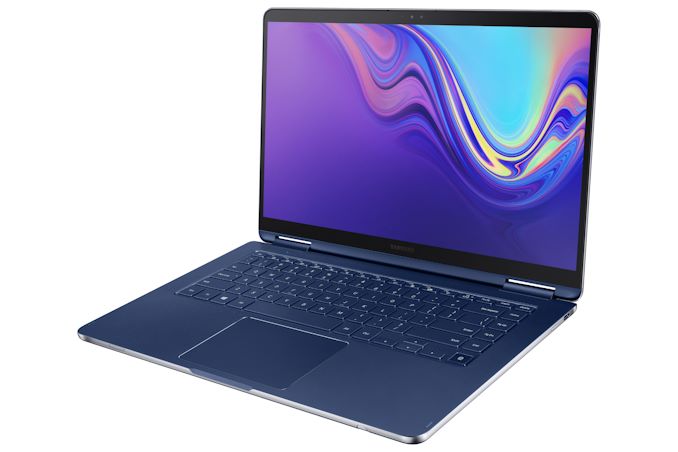
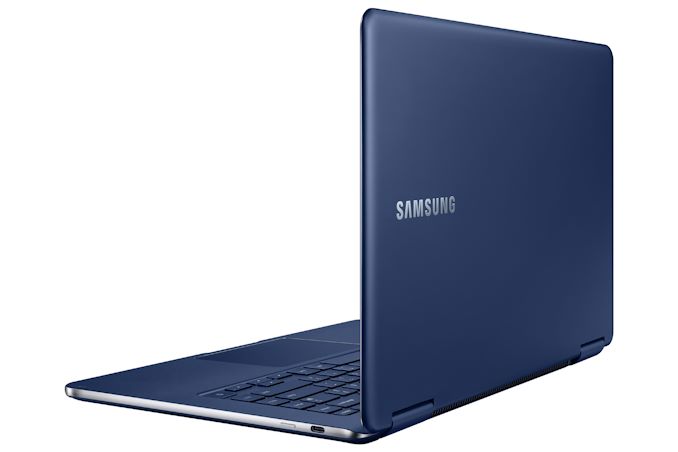

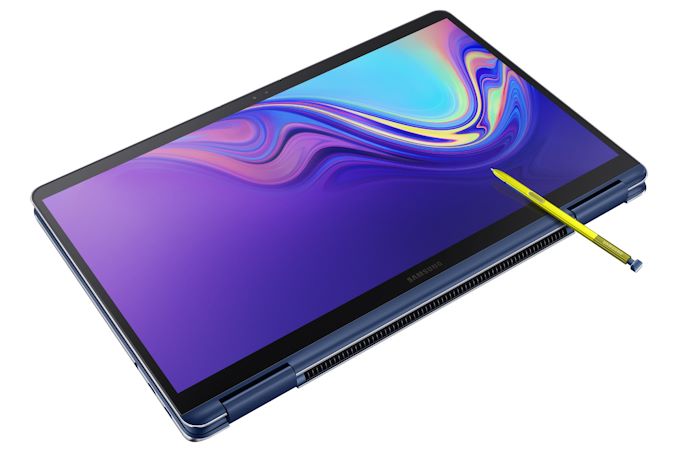
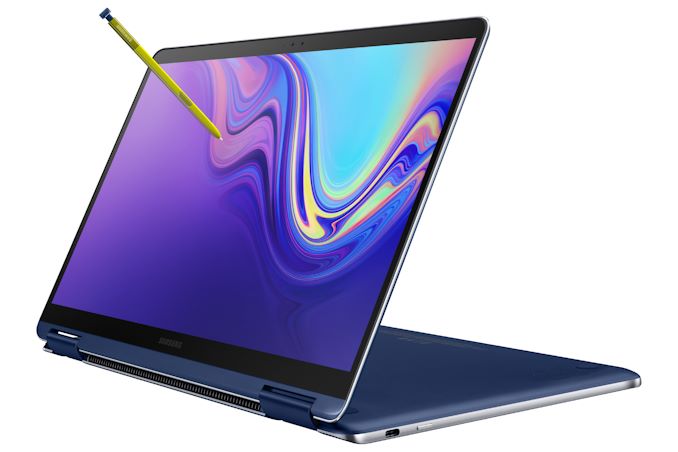














38 Comments
View All Comments
digiguy - Sunday, December 16, 2018 - link
And Samsung notebook 9 is even slightly lighter and has a 75wh battery... but either is a 2-in-1 as this inscreases the weight...digiguy - Sunday, December 16, 2018 - link
I have followed Samsung notebooks closely and have their lightest model ever, the notebook 9 13.3 2017 (under 1.8 pounds)I don't like what they have done this year, as least as a business user....
1. the current notebook 9 pen is the lighter 2-in-1 in the market probably the only one that is still kind of usable with one hand. They put a bigger battery in exchange for more weight so it's a trade-off. But the big advantage of samsung notebook is that they charge with everything (5v, QC, PD), so all powerbank and quick charge phone chargers will work at their max speed. So I have never felt the need for more battery life since any phone charger or small power bank will do.
2. TB3 is the overhyped port everybody wants but very few actually use..
Business users don't use eGPUs and USB C dock is plenty good.
3. USB A is the port every business user needs and there is always a time when someone gives you a USB pen drive at a meeting etc. and you don't have the adapter with you...
4. 1080p is still the sweet spot for 13.3... especially if you use software that does not work well with high DPI (many business users do..)
1440p would be nice on the 15in but other than the thinkpad nobody does it, because like 3.2, it's too expensive. I guess even 4k is cheaper since a lot of OEMs use it... 4k is only good for marketing in a business laptop, 2k would be great hardly anyone use it... (like with monitors, I was looking for a 24in 2k monitor and they are almost non existing and the cheapest option I found was a 4k one!)
I do hope their are not going to the the same on their non touch laptops...
Also, Samsung laptop last year were great products (largest battery ever on a 13.3) but did 0 advertising, 0 units sent to reviewers so you won't find reviews contrary to LG, people hardly know they exist... The small advertising budget went all to the notebook 9 pen...
HStewart - Sunday, December 16, 2018 - link
I probably agree with video part of what you said. But USB C / TB3 part is different story - as a user of several notebooks that use USB C and also TB31. USB A is two big for thin notebooks and tablets
2. Most Tablets and Phone are started to used newer USB C - even Apple is switching from lightning connector.
As for Thunderport 3 (TB3)
1. It is superset of USB C - TB3 does everything USBC does and more
2.I try many USB C docks and struggle to find one that works with both - best to go with manufacture of tablet or notebook.
3. TB3 is more for business side - you forgot to mention higher end disk storage - primary used in digital artist industry.
Just because TB3 is not made major impact in desktop industry which is only a small part of computer industry today but is what this site mostly deals with does not mean it bad thing. Like it or not industry is moving mobile and USB A is on it way out.
I been using computers for along time - I remember when first USB came out - it was similar - rare to find and adapters for mouse and keyboard devices out there.
digiguy - Monday, December 17, 2018 - link
"1. USB A is two big for thin notebooks and tablets"Not True. The samsung notebook 9 is impossibly thin (ipad air thin) and still packs 2 USB A. No point in making any laptop thinner. Light is good, thin is pointless after a certain level. By the way the notebook 9 is the lightest of any laptop.
2. Most Tablets and Phone are started to used newer USB C - even Apple is switching from lightning connector.
Love UBS C in my notebook 9, everybody should implement it the same, not as some crappy implementations that don't let you charge or only charge via PD. Just leave a usb A too.
As for Thunderport 3 (TB3)
"1. It is superset of USB C - TB3 does everything USBC does and more"
I know
"2.I try many USB C docks and struggle to find one that works with both - best to go with manufacture of tablet or notebook."
What's the point you are trying to make here?
"3. TB3 is more for business side - you forgot to mention higher end disk storage - primary used in digital artist industry."
TB3 disks is still a niche segment. Having said that I am not against TB3. I just said that 90% of people don't need it now. If it's there great, but if I had to chose between USB C + A and USB C only with TB3 I would take the first any day. If you can have everything even better. Having said that I am not buying anything that has not USB C AND (for laptops) USB A.
"Just because TB3 is not made major impact in desktop industry which is only a small part of computer industry today but is what this site mostly deals with does not mean it bad thing. Like it or not industry is moving mobile and USB A is on it way out."
Not for the next decade at least in the business world... Like it or not things are moving very slowly... And who said TB3 is bad by the way? It's just not an excuse to remove USB A
Lolimaster - Sunday, December 16, 2018 - link
Still insist on useless 16:9 aspect ratio for laptops, it's fine for TV's not for productivity16:10 and 3:2 are the best options.
Lolimaster - Sunday, December 16, 2018 - link
Still insist on useless 16:9 aspect ratio for laptops, it's fine for TV's not for productivity16:10 and 3:2 are the best options.
HStewart - Sunday, December 16, 2018 - link
Personally I don't understand why they 16:10 ratios and I glad to get away form old Tube style of 3:2 - I wider screen is more productive - but I not sure that we will ever have an ultrawide laptop unless it can fold out.Gunbuster - Wednesday, December 19, 2018 - link
PEN15 /Facepalm